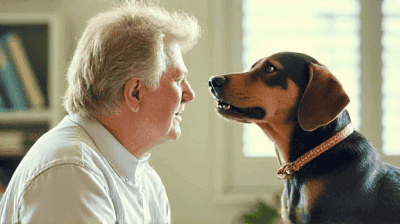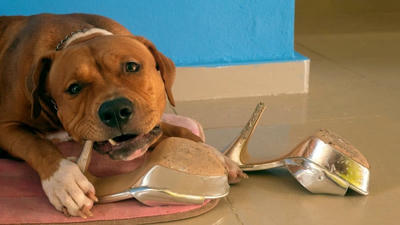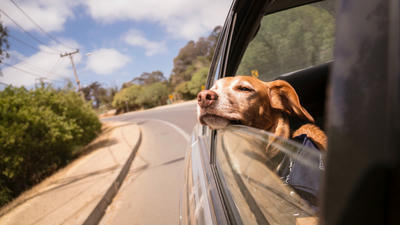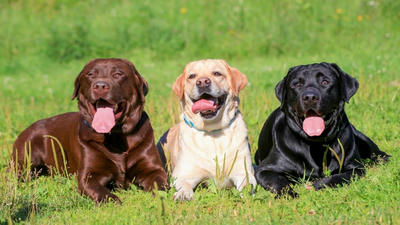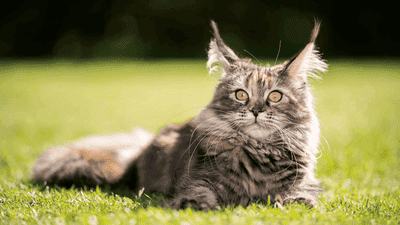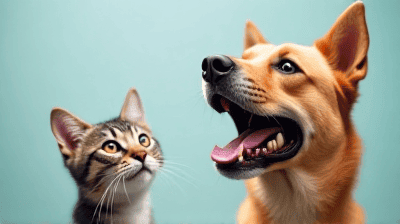
Capturing the perfect photo of your pet can be a rewarding yet challenging endeavor. Pets, with their boundless energy and unpredictable behavior, often make it difficult to get that one flawless shot. However, with the right techniques, you can turn a chaotic photoshoot into a fun and productive session. One of the most effective tools at your disposal? Treats. When used strategically, treats can help you grab your pet’s attention, encourage cooperation, and even bring out their most photogenic expressions.
The Importance of Treats in Pet Photography
Treats are more than just a reward for good behavior—they are a powerful tool for communication and motivation. In pet photography, treats can serve multiple purposes, including:
1. Grabbing Attention
Pets, especially dogs, are naturally food-motivated. Using treats can help you direct your pet’s gaze, ensuring they look at the camera or follow your commands during a photoshoot.
2. Encouraging Cooperation
A well-timed treat can motivate your pet to stay in place, hold a pose, or perform a specific action, such as sitting or lying down. This can make the photoshoot smoother and more productive.
3. Creating Positive Associations
Using treats during photoshoots can create a positive association with the camera and the entire process. This can make future sessions easier and more enjoyable for both you and your pet.
4. Bringing Out Natural Expressions
Treats can elicit natural, joyful expressions from your pet, such as a wagging tail, a bright-eyed gaze, or even a playful smile. These moments can result in some of the most heartwarming and authentic photos.
Choosing the Right Treats for Your Pet

Not all treats are created equal, and the type of treat you use can significantly impact the success of your photoshoot. Here are some factors to consider when selecting treats for your pet.
1. Size Matters
Choose small, bite-sized treats that your pet can quickly consume. Large treats can distract your pet as they chew, making it harder to maintain their attention. Small treats also allow you to reward your pet frequently without overfeeding them.
2. High-Value Treats
High-value treats are those that your pet finds particularly irresistible. These can be store-bought treats, such as freeze-dried liver or cheese, or homemade options, like small pieces of cooked chicken or turkey. High-value treats are especially useful for pets who are less food-motivated or those in distracting environments.
3. Healthy Options
While it’s tempting to use whatever treats are on hand, it’s important to choose healthy options that won’t upset your pet’s stomach. Look for treats that are low in sugar and fat, and avoid anything that contains artificial additives or fillers.
4. Allergies and Dietary Restrictions
Be mindful of any allergies or dietary restrictions your pet may have. If your pet is on a special diet, consult your veterinarian to ensure the treats you use are safe and appropriate.
Timing and Positioning: When and Where to Use Treats
Using treats effectively during a photoshoot requires careful timing and positioning. Here are some tips to help you get the most out of your treats.
1. Start with a Hungry Pet
Schedule your photoshoot when your pet is slightly hungry, such as before a meal. A hungry pet is more likely to be motivated by treats and willing to follow your commands.
Key Tip: Avoid overfeeding your pet right before the photoshoot, as a full stomach may reduce their interest in treats.
2. Use Treats Sparingly
While treats are a great motivator, over-relying on them can make your pet lose interest or become distracted. Use treats sparingly, only when you need to grab their attention or reward specific behaviors.
Key Tip: Keep a small stash of treats in your pocket or a treat pouch for easy access during the shoot.
3. Position Yourself Strategically
Position yourself in a way that allows you to direct your pet’s gaze toward the camera. Hold the treat close to the lens or slightly above it to encourage your pet to look in the desired direction.
Key Tip: Use a treat to guide your pet’s head into the right position, but move it quickly away once they’re in place to avoid them licking or sniffing the treat in the photo.
4. Timing is Everything
Timing is crucial when using treats to capture the perfect shot. Use the treat to get your pet’s attention, but be ready to snap the photo at the right moment—just before they take the treat or as they look at you expectantly.
Key Tip: Use a camera with a fast shutter speed to capture the exact moment your pet’s attention is focused on the treat.
Techniques for Using Treats During Photoshoots

Now that you understand the basics of using treats, let’s dive into specific techniques that can help you capture stunning photos of your pet.
1. The Attention Grabber
This technique involves using a treat to get your pet to look directly at the camera. Hold the treat close to the lens or just above it, and wait for your pet to turn their head toward you. As soon as they make eye contact, snap the photo.
Key Tip: Use a verbal cue, such as “look” or “here,” to encourage your pet to focus on the treat.
2. The Pose Keeper
If you want your pet to hold a specific pose, use treats to encourage them to stay in place. For example, if you want your dog to sit, hold the treat just above their nose and slowly move it backward over their head. This will naturally encourage them to sit. Once they’re in position, reward them with the treat and take the photo.
Key Tip: Use a treat to guide your pet into the desired pose, but remove it from view once they’re in position to avoid them moving or reaching for it.
3. The Action Shot
Treats can be used to capture action shots by encouraging your pet to perform a specific behavior, such as jumping, running, or fetching. Toss the treat in the direction you want your pet to move, and be ready to snap the photo as they react.
Key Tip: Use a fast shutter speed to freeze the action and ensure your pet is in focus.
4. The Expression Enhancer
Treats are great for bringing out natural, joyful expressions in your pet. Hold the treat in your hand but don’t give it to them immediately. Instead, wait for them to show excitement, curiosity, or anticipation, and snap the photo at the perfect moment.
Key Tip: Be patient and wait for your pet to exhibit genuine emotions rather than forcing a reaction.
5. The Peek-a-Boo Technique
For a playful, candid shot, use treats to create a peek-a-boo moment. Hide the treat behind an object or your hand, and then reveal it to your pet. As they react with curiosity or excitement, capture the moment.
Key Tip: Use a wide aperture to create a shallow depth of field, keeping your pet in focus while blurring the background.
Combining Treats with Other Training Tools
While treats are a powerful tool, they can be even more effective when combined with other training techniques. Here are some additional tools and methods you can use during your photoshoot.
1. Verbal Commands
Verbal commands, such as “sit,” “stay,” or “look,” can help guide your pet’s behavior during the photoshoot. Use these commands in conjunction with treats to reinforce good behavior and encourage cooperation.
2. Toys and Props
Toys and props can be used to grab your pet’s attention or add an element of fun to the photoshoot. For example, a squeaky toy can elicit a playful expression, while a favorite blanket can create a cozy, relaxed atmosphere.
Key Tip: Choose toys and props that complement your pet’s personality and the theme of the photoshoot.
3. Clicker Training
Clicker training involves using a small device that makes a clicking sound to mark desired behaviors. When your pet performs the desired action, you click the device and immediately reward them with a treat. This method can be particularly effective for teaching your pet to hold a pose or perform specific actions during a photoshoot.
Key Tip: Use the clicker to mark the exact moment your pet performs the desired behavior, and follow up with a treat to reinforce it.
4. Treat-Dispensing Toys
Treat-dispensing toys can be used to keep your pet engaged and focused during the photoshoot. Place a few treats inside the toy and let your pet play with it. As they interact with the toy, capture candid, playful shots.
Key Tip: Use treat-dispensing toys in between posed shots to keep your pet entertained and motivated.
Post-Processing Tips for Pet Photos

Once you’ve captured your photos, post-processing can help you enhance the final result. Here are some tips for editing your pet photos to make them stand out.
1. Adjust the Exposure
If your photos are too dark or too bright, adjust the exposure to ensure your pet’s features are clearly visible. Use photo editing software to fine-tune the brightness and contrast of the image.
2. Sharpen the Focus
Sharpening the focus can make your pet’s eyes and fur appear crisper and more detailed. Use a sharpening tool with a small radius to avoid creating unnatural artifacts.
3. Crop and Straighten
Use the crop tool to remove any distracting elements from the background and straighten the image if needed. This can help draw attention to your pet and create a more balanced composition.
4. Add a Vignette
A subtle vignette can draw attention to your pet by darkening the edges of the frame. This works particularly well with close-up portraits or images with a neutral background.
5. Enhance Colors
Use photo editing software to enhance the colors in your image, particularly if you used a colorful background or props. Adjust the saturation and vibrance to make the colors pop without overwhelming the photo.
Conclusion
Using treats to your advantage during pet photoshoots is all about understanding your pet’s motivations and leveraging them to capture the perfect shot. By choosing the right treats, timing them effectively, and combining them with other training techniques, you can create a fun and productive environment that results in stunning, attention-grabbing photos.
Remember, the key to successful pet photography is patience, creativity, and a willingness to adapt to your pet’s needs. Whether you’re using treats to grab their attention, encourage a pose, or bring out their natural expressions, these techniques will help you capture the essence of your pet’s personality and create lasting memories.
So grab your camera, stock up on treats, and start capturing beautiful photos of your furry friend that you’ll treasure for years to come.

